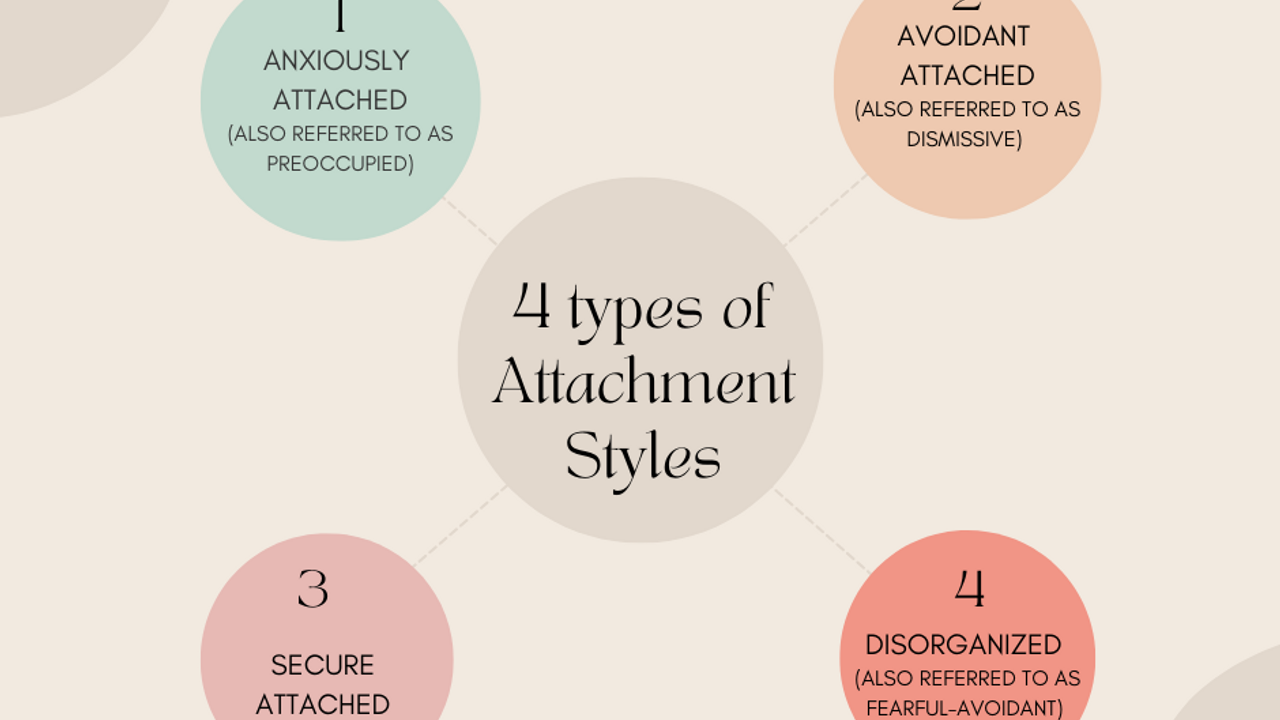What's your Attachment style?
Aug 08, 2022
There are four main attachment styles, according to The Attachment Project.com. and the book, Attached by Dr. Amir Levine and Rachel S.F. Heller, MA. The focus will be on the first three styles.
Anxiously Attached (also referred to as Preoccupied) people are often preoccupied with their relationships and tend to worry about their partner's ability to love them back.
Avoidant Attached (also referred to as Dismissive) people equate intimacy with a loss of independence and constantly try to minimize closeness.
Secure Attached people feel comfortable with intimacy and are usually warm and loving.
Disorganized (also referred to as Fearful-Avoidant) people are both uncomfortable with intimacy and very concerned about your partner's availability; you have the rare combination of attachment anxiety and avoidance. Only a small percentage of the population falls into this category. However, if you are one of them, you can benefit from information on both the anxious and avoidant attachment styles.
How do attachment styles develop in early childhood?
The behavior of the primary caregivers (usually one's parents) contributes to and forms how a child perceives close relationships.
The child is dependent on their caregivers and seeks comfort, soothing, and support from them. If the child's physical and emotional needs are satisfied, they become securely attached.
This, however, requires that the caregivers offer a warm and caring environment and are attuned to the child's needs, even when these needs are not clearly expressed.
On the other hand, misattunement on the parent's side is likely to lead to insecure attachment in their children.
According to Attached by Dr. Amir Levine and Rachel S.F. Heller, other factors are at play too. As more studies become available, there is increasing evidence that a secure attachment style doesn't originate from a single source. The equation of a caring and sensitive parent producing a secure-for-life child is too one-dimensional; instead, it seems that an entire mosaic of factors comes together to create this attachment pattern: our early connection with our parents, our genes, and also something else – our romantic experiences as adults. And that change can come in both directions – secure people can become less secure and people who were originally insecure can become increasingly secure.
In their book, Attached, and Theattachementproject.com is a questionnaire you may want to take and get further information on your attachment style.
Understanding your attachment style is essential to help improve your self-awareness and enhance your relationships. As a Love Coach, it's necessary to offer various tools and techniques to assist in the process. Please take my Love Assessment here to find out where you are in the process of love.
Do you like this content? Are we the right fit? Let's get to know each other with a 30 minute chat.
Stay connected with news and updates!
Join our mailing list to receive the latest news and updates from our team.
Don't worry, your information will not be shared.
We hate SPAM. We will never sell your information, for any reason.

